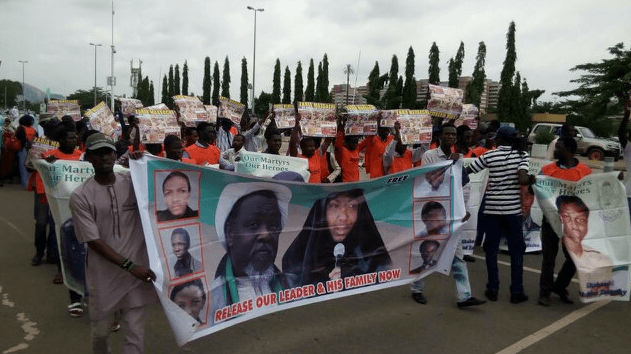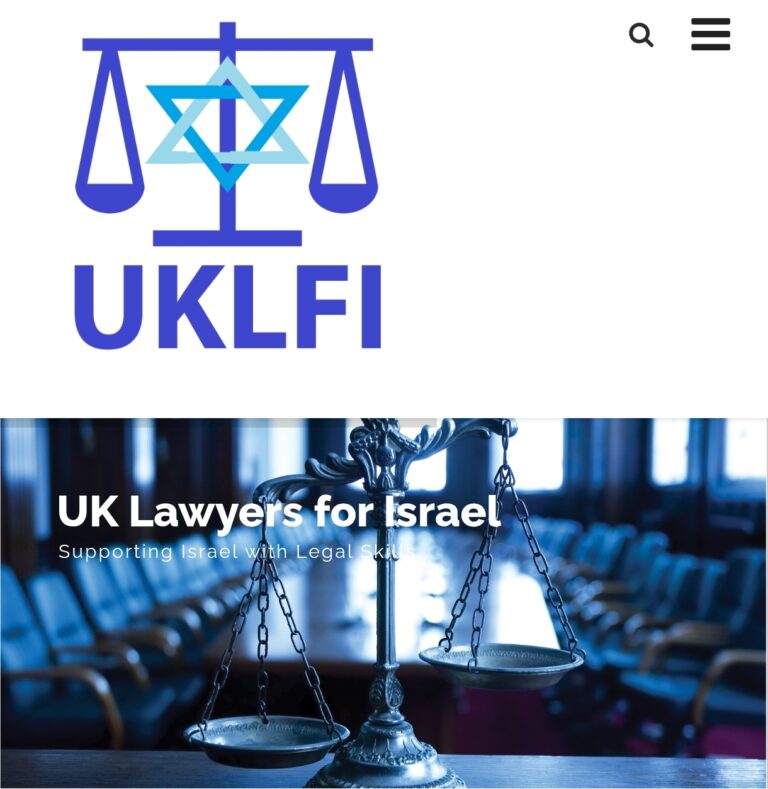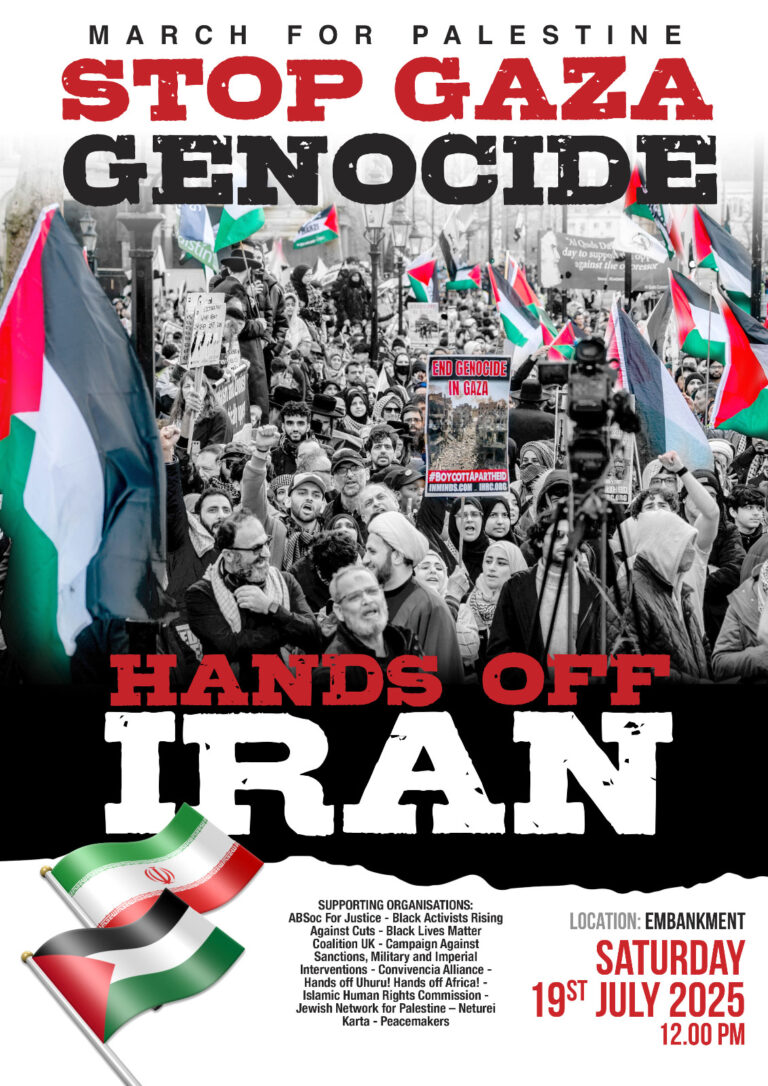His Excellency Moussa Faki Mahamat
African Union Commission Chairperson
Sent via email: chairperson@africa-union.org
Wednesday 16 August 2017
Your Excellency,
Re: Mu’allim Ibraheem El-Zakzaky (Al-Zakzaky), Mallimah Zeenah and the Islamic Movement of Nigeria
I am writing to bring to your attention a matter of the utmost gravity, and hope that you will give this matter with the urgency it requires.
About Us
The Islamic Human Rights Commission was set up in 1997. We are an independent, not-for-profit, campaign, research and advocacy organization based in London, UK. We have consultative status with the United Nations Economic and Social Council.
We work with different organizations from Muslim and non-Muslim backgrounds, to campaign for justice for all peoples regardless of their racial, confessional or political background.
Our research work includes submitting reports to governments and international organizations, writing articles, monitoring the media, cataloguing war crimes and producing research papers on hate crime, discrimination, the nature of human rights and so on.
The Complaint
Background
The Nigerian army carried out massive attacks over the course of 12 to 14 December 2015 which targeted the Islamic Movement of Nigeria (IMN) in Zaria.
The operation resulted in the deaths of at least 1000 unarmed civilians, mostly IMN members, killed by gunshots attributed to soldiers. Hundreds more were injured. There were reports that the military blocked access to medical care for the injured and shot at and killed wounded persons. Witnesses and victims reported signs of widespread force and cruelty with allegations of looting, arson, mutilation, mass graves, torture, rape and other inhumane acts levelled at the Nigerian army.
The supporting materials and eyewitness accounts further indicate that such massive acts of violence were carried out in the context of a widespread and systematic attack against the Nigerian civilian population. The violence unleashed on members of the IMN has a history and it is a history of premeditation. There is also sufficient evidence to suggest an official plan by Nigerian government officials to cover up these crimes and indeed perpetuate the same.
This IHRC communication aims to provide a solid understanding of the events and infringements of civil liberties by the Nigerian Army and government, and it is based on eyewitness accounts and other supporting materials.
The Nigerian army carried out attacks over the course of 12-14 December 2015 at:
- the Hussainiyyah and religious centre located at No.1A, Sokoto Road, Zaria;
- the home of the IMN leader Shaykh Ibraheem al-Zakzaky in the Gyellesu neighbourhood of Zaria;
- the group’s burial ground of Darur-Rahma, in Dembo village, in the outskirts of Zaria; and
- The home and burial place of Hajiya Saliha Muhammad, Shaykh al-Zakzaky’s late mother in the Jushi neighbourhood of Zaria
Eyewitness accounts confirm that on the morning of Saturday 12th December 2015, soldiers were stationed opposite the Hussainiyyah Baqiyatullah (hereafter referred to as Hussainiyyah). They shot in the air initially and later at people without provocation. In the midst of the confusion that ensued, and without warning, a siren belonging to the purported entourage of the Chief of Army Staff Lieutenant General Tukur Yusuf Buratai went off. Video evidence and eyewitnesses saw soldiers killing small children who were confused and running for refuge outside the Hussainiyyah. They remained in that location killing IMN members on sight. The members of the IMN, who were unarmed, took cover inside the Hussainiyyah. The soldiers cordoned off the Hussainiyyah preventing the injured inside the centre from coming out to seek medical help. As a result many of those with serious gunshot wounds died. The army later killed the majority of those who had sought refuge in the Hussainiyyah, including the injured, women and children when it invaded and destroyed the complex.
While the Nigerian army was undertaking its killing spree at the Hussainiyyah on that fateful Saturday, another contingent of the Nigerian Army, in about nine trucks carrying heavy arms and ammunition, cordoned off Gyellesu neighbourhood where the leader of IMN, Shaykh Ibraheem al-Zakzaky resides, some five kilometres away from the Hussainiyyah. They started killing unarmed civillians indiscriminately through the day and throughout the course of the night. Whenever they shot someone and others rushed to pick him/her up, the soldiers would then shoot and kill them as well. That situation lasted for hours with another reinforcement of soldiers arriving in about as many trucks and Armoured Personnel Carriers. They engaged in continued bloodshed, breaking the human shield made by unarmed members of the IMN with ease, forcing their way through a pile of human corpses to get into Shaykh al-Zakzaky’s residence. They virtually killed their way through. Witnesses have told of how the 500-metre stretch of road leading to the house was filled with corpses. Once at the house, the soldiers used explosives to bring down a section of the house and ignited a fire.
Thereafter, the Nigerian army killed those that were injured and receiving first aid in the compound, setting fire to some corpses and the injured as well.
Eyewitnesses and surviving victims report mutilation of the dead – cutting of throats, slashing the genitals of both males and females, poking out of eyes and so on. There were cases of women being sexually assaulted and shot in their genitals by the soldiers. When they were done, survivors reported that the soldiers were celebrating, saying “we have finished with the Shia and Zakzaky. No more Shia in Nigeria”.
At least 1000 civilians are estimated to have been killed and hundreds more injured as a result of the military attacks over the two days. In addition, we have received reports that the soldiers quickly buried the corpses of those killed in mass graves without the knowledge or permission of family members, with the aim of impeding an accurate count of the dead. Accordingly, IMN members told IHRC that mass graves were documented between 14 and 15 December 2015 in some locations in Kaduna state, one location being along Kaduna to Birnin Gwari road.
Following the attacks against the Hussainiyyah and the residence of Shaykh al-Zakzaky, the army proceeded to destroy buildings and graves linked to the IMN. The Hussainiyyah at GRA area was completely destroyed. The Fudiyya Islamic Centre at Dan Magaji and the family home of Shaykh al-Zakzaky, where his mother’s tomb is located in Zaria suffered a similar fate. Graves belonging to former members of the IMN at the Darur Rahma cemetery situated 10 miles outside of Zaria were demolished.
IMN spokespersons have stated that the army premeditated the attacks. Army officials claim that the cause of the violence by the army was a traffic incident involving the army and IMN supporters. This in reality exposes the intention of the army to cover up all the crimes committed by its soldiers. According to what is reported by Human Rights Watch, the army has publicly confirmed that its confrontation with the IMN members was provoked by the movement’s affiliates who had erected a makeshift roadblock near a mosque in an assassination attempt on the army chief of staff Lieutenant General Tukur Buratai, whose convoy was passing through the area. In an internal military document seen by HRW, the army said protesters appeared to be taking up positions near the back of the convoy. IMN members and Shaykh al-Zakzaky, in an interview granted to the BBC that day, disputed this and categorically said that there were no roadblocks when the military deployed in front of Hussainiyyah. Pictures from the time the military first assembled opposite the Hussainiyyah corroborated the absence of roadblocks at the time with what appeared to be free flow of vehicular and human traffic. Furthermore, there is photographic evidence of extra ammunition boxes placed between the soldiers’ feet from the start. IMN members therefore expressed their deep-rooted belief that the attacks were premeditated and politically motivated.
Since the Attack
There have been numerous, troubling developments since the incidents above. The following is a brief outline:
– 13 December 2015 – Army attacked the home of Shaykh al-Zakzaky, the Hussainiyyah Baqiyatullah and the Dar al-Rahma Cemetery. Over 1,000 people were killed during the attack and several hundred people arrested.
– 14 December 2015 – Shaykh al-Zakzaky moved to a military hospital in Kaduna. Mallimah Zeenah moved to a military hospital as well. Others have been moved to a military hospital in Zaria, but are as yet unnamed. 170 prisoners held by the army have been handed to the police in Kaduna. Hundreds have been handed to the police by the army in Zaria. The numbers are unknown. There were reports that some of the bodies of those killed have been mutilated around their private parts.
– 15 December 2015 – Army opens fire on peaceful demonstration in Kaduna; army razes Shaykh al-Zakzaky’s house to ground; reports of mass graves.
– 16 December 2015 – The military released 500 women and children detained since 15 December. They were left at a primary school in Samaru area of Zaria. A separate group of 175 captives were earlier brought to Kaduna from military detention who were dispersed between different police detention centres and remain captive.
– 18 December 2015 – 200 detainees (including over 30 others with untreated gunshot wounds) were transferred to prison in Kaduna.
– 19 December 2015 – It was confirmed that three sons of Shaykh al-Zakzaky were killed in the violence. Hammad (18), Ali (16) and Humaid (14) were all shot.
– 20 December 2015 – Heavy duty bulldozers arrived at the Hussainiyyah Baqiyatullah in Zaria in order to demolish it.
– 23 December 2015 – The grave of Shaykh al-Zakzaky’s mother was been razed by the army.
– 01 January 2016 – Abbas Isiyaku, who was detained during the attacks on 12-13 December 2015, died in custody.
– 06 January 2016 – At a press conference on 04 January 2016, the Sisters Forum of the Islamic Movement of Nigeria confirmed that women killed and detained by soldiers during the 12-14 December killings and attacks on IMN, were sexually abused, from having their hijab removed, being molested and also raped. Some of the victims were killed, others survived and were detained, but are now released.
– 15 January 2016 – Army allows access to Shaykh al-Zakzaky after intense international pressure – he is suffering from four gunshot wounds while his wife has two. The pair are said to have received medical attention abroad.
– 30 March 2016 – IHRC launches campaign to stop impending violence in Katsina, when the Nigerian Army surrounded a Mosque. Fortunately, the pressure generated from the publicity helped avoid the situation escalating.
– 11 April 2016 – State government admits burial of massacre victims in mass grave.
– 12 October 2016 – Army kills mourners at annual Ashura commemorations organised by IMN. Deaths were reported in Funtua in Katsina state, Kaduna city and Sokoto. Over 200 people were arrested and detained in Kaduna.
– 14 November 2016 – Army opens fire on Arbaeen commemorations in Kano organised by IMN.
– 02 December 2016 – The High Court ordered the Department of State Services (DSS) to release Shaykh al-Zakzaky and his wife within 45 days. The deadline was 15 January 2017.
– 17 January 2017 – IHRC organises vigil outside the Nigerian High Commission in London as Shaykh al-Zakzaky was still being held unlawfully and in contempt of court.
– 12 April 2017 – Police use violence against protestors marching to demand the release of the leader of Nigeria’s Islamic Movement. Tear gas, water cannon and dogs were used to disperse the peaceful demonstration in the capital Abuja.
– 26 April 2017 – Protestors in Nigeria marked 500 days in detention of Shaykh al-Zakzaky and his wife Mallimah Zeenah with a peaceful demonstration in the capital Abuja. Thousands of demonstrators marched from the Unity Fountain in central Abuja demanding that the government respect the rights to the person, liberty and fair trial afforded to every individual by the Nigerian constitution.
– 25 July 2017 – Heavy deployment of security operatives comprising of anti-riot, regular police and soldiers disrupted the IMN annual remembrance of the killing of three of Shaykh al-Zakzaky’s sons and 31 other members in Zaria on July 25, 2014. The event which was being held in Zaria, was besieged by the security operatives who stormed the venue with over 18 trucks filled with personnel.
Update on current situation
There are currently 167 people still detained after the December 2015 massacre, including Shaykh al-Zakzaky and his wife Mallimah Zeenah. Of those detained, 25 people are currently suffering from wounds and injuries inflicted in December 2015 with many still having bullets and shrapnel lodged in their body, which has not been removed due to a lack of medical attention. Shaykh al-Zakzaky has lost one eye following the attack and has been told he will lose sight in his other eye if he is not seen by a specialist soon. The government has refused to provide him, or the other detainees, with the necessary medical treatment.
Those who remain detained are being prosecuted on various fictitious charges. To date, no one has been convicted, and the government has ensured the prosecutions have moved at a very slow pace (due to nonappearance of witnesses, judges or long adjournments). Most of those being prosecuted have been denied bail (the number of people being prosecuted following the December 2015 attack is 189, with only 22 people being granted bail on medical grounds). Shaykh al-Zakzaky and his wife are held without charge or conviction, in contravention of a High Court order demanding their release.
Request for Urgent Action
Shaykh al-Zakzaky and his wife have been held in detention by the state since December 2015 along with 167 members of the IMN. They have been held without charge or conviction, with many suffering from injuries that have not been treated to this day.
The Nigerian government has done nothing to bring those responsible to justice, and has made little effort to alleviate the hardship of those detained and injured. Instead, what we are seeing is a government that is willing to turn a blind eye to crimes against humanity, ignore gross abuses of human rights and civil rights and completely subvert the rule of law to pursue a sectarian political agenda. We do not see a solution to this situation coming from the Nigerian government soon.
We believe that the only way to end the gross injustice faced by those detained is for the African Union to intervene and mediate a solution. The standing and authority of the African Union will lend weight to a just solution bringing the unjust incarceration of IMN members to an end.
If you need further information or wish to discuss any aspect of what has been included in this letter please do not hesitate to contact me.
Yours Sincerely,
Massoud Shadjareh




